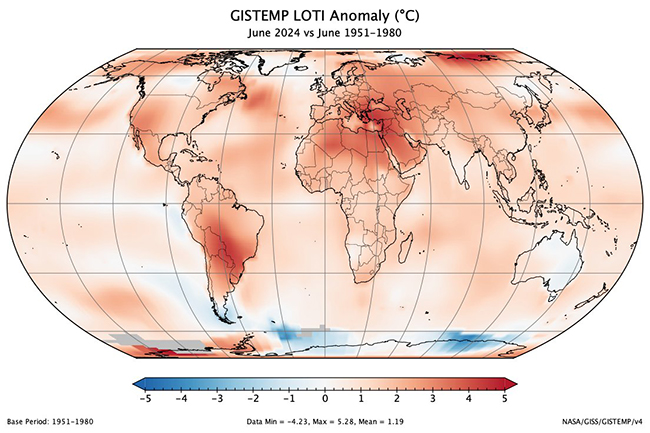As La Niña continues to stir in the tropical Pacific Ocean, the latest analysis shows there’s a 70 percent chance it will develop between August and October.
The climate phenomenon shifts the world’s atmospheric circulation, changing weather patterns around the globe. Characterized by cooler-than-average sea surface waters in large swaths of the tropical Pacific, it also usually takes the edge off human-caused heating of the planet, albeit temporarily.
But even taking that likely cooling effect into account, a new annual global heating record is very likely in 2024, according Gavin Schmidt, director of NASA’s Goddard Institute for Space Studies.
With last month coming in as Earth’s warmest June on record, a new global heating record is likely in 2024. (Credit: Gavin Schmidt via Bluesky)
Schmidt made the prediction on the Bluesky social media platform after his institute’s analysis showed last month to be the warmest June on record. It was also the 13th straight month with record-breaking global temperatures. (Other analyses have shown the same, including one released by NOAA today.)
A Shocking Degree of Heating
Last year shattered the record for the hottest year globally since record-keeping began in the 1800s. With an El Niño adding to the global heating caused by our continuing emissions of greenhouse gases, a new record in 2023 should not have come as a surprise. But the heat over land and in the seas was so extreme that scientists were nonetheless shocked — and they’re still working hard to understand the details of what happened.
Although there are signs that Earth’s very high fever may finally be breaking, what we’ve seen so far in the first half of this year is apparently enough to push us above 2023’s dubious record.
Source : Discovermagazine












